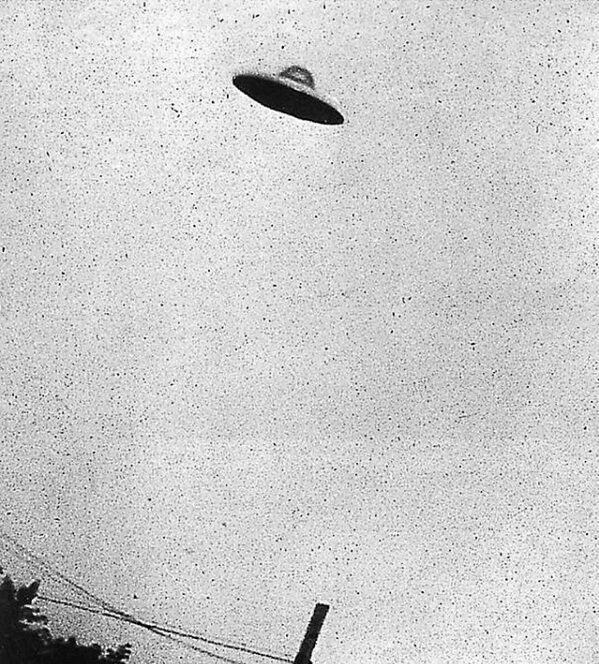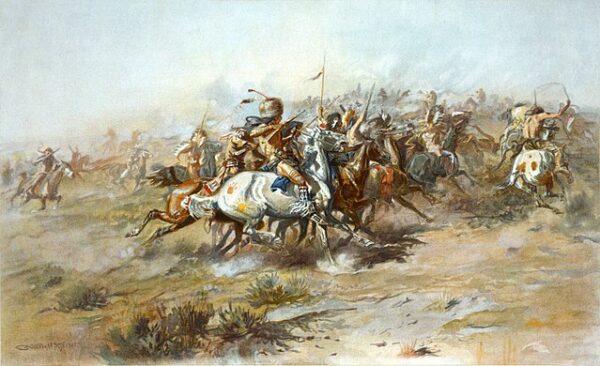On June 24, 1947, a new term entered the American vernaculr: “flying saucer.” On that day a seasoned pilot and businessman Kenneth Arnold had an unusual encounter changed the course of his life and had a dramatic influence on the way humanity places itself among the universe.
Russell Lee, a curator in the Aeronautics Department of the Smithsonian Institution’s National Air and Space Museum, detailed his story, writing that “Arnold took off from Chehalis, Washington, on his way to an air show in Pendleton, Oregon, with a planned fuel stop at Yakima, Washington. He was an experienced pilot with 4,000 hours of flying time logged, and a member of an Idaho search and rescue unit. He was piloting a single-engine CallAir A-2 light airplane. Skies were clear and the winds light. He planned to detour a bit en route. A U.S. Marine Corps Curtiss C-46 Commando transport had crashed with 32 U.S. Marines on board somewhere near his eastward course, and Arnold hoped to find the downed aircraft and claim a $5,000 reward.”
Shortly before 3:00 p.m., as Arnold circled his airplane about 20 miles west of Mt. Rainier, searching for the C-46, he saw a bright flash to the northeast. “It startled me. I just assumed it was some military lieutenant out with a shiny P-51 and I had [caught] the reflection of the sun hitting the wings of his plane.” After more flashes appeared, Arnold ruled out a nearby Douglas DC-4 airliner as the source. He claimed they emanated from nine shiny objects flying in an echelon formation about five miles long. Arnold described each object as circular, about 100 feet across, and with no discernible tail. The objects periodically flipped, banked, and weaved side-to-side, “like the tail of a Chinese kite.”
The formation was crossing in front of Arnold and he decided to time its passage from Mt. Rainier to Mt. Adams. He calculated the objects were flying at about 1,200 mph (some accounts say 1,700 mph), two times faster than any airplane known at that time. Months would pass before Col. Chuck Yeager flew the Bell X-1 rocket airplane to a speed of 700 miles per hour and exceeded the speed of sound.
Arnold emphatically denied that he initially described the objects as “flying saucers,” but as Megan Garber wrote in her June 15, 2014, article for The Atlantic, “Stories of the time credit Arnold with using the terms “saucer,” “disk,” and “pie-pan” in his description of the objects he had seen.” He told his story to reporters Bill Bequette and Nolan Skiff of the East Oregonian newspaper the day after his sighting. Skiff used the words “saucer-like aircraft” when he published a short print article that same day. After suggesting to Arnold that a wire story might generate comments from the military on flights of experimental aircraft that could explain Arnold’s sighting, Bequette published a brief story picked up by the Associated Press wire service, using the words “nine bright saucer-like objects” to describe what Arnold said he saw. By afternoon, the tale that he had seen “flying saucers” had spread nationwide. A radio host interviewing Arnold on June 26 noted how rapidly the story was shared, saying, “The Associated and United Press, all over the nation, have been after this story. It’s been on every newscast, over the air, and in every newspaper I know of.” The Chicago Sun ran the headline, “Supersonic Flying Saucers Sighted by Idaho Pilot.” Arnold became a media sensation, but he did not welcome the attention. Interviewed 30 years later, Arnold said, “I have, of course, suffered some embarrassment here and there by misquotes and misinformation” published in various outlets.
The pilot changed his description of what he saw over time. In his report, Arnold sketched a shape that resembled the heel of a shoe, with a rounded leading edge and a shallow pointed trailing edge. Interestingly, the Vought V-173 Flying Pancake, an aircraft on display at the National Air and Space Museum, bears a striking resemblance to the form that Arnold drew.
Arnold’s sighting quickly captured the attention of the media, sparking worldwide interest in UFOs. His detailed descriptions and credibility as a witness lent credence to the phenomenon, marking the beginning of the modern UFO era. The event also had a profoundly impacted the scientific community’s interest in studying unexplained aerial phenomena, fueling ongoing debates about extraterrestrial life.
Today, Kenneth Arnold’s UFO sighting remains a landmark event in the annals of ufology. It has contributed significantly to the ongoing quest for answers regarding the existence of intelligent life beyond our planet.






